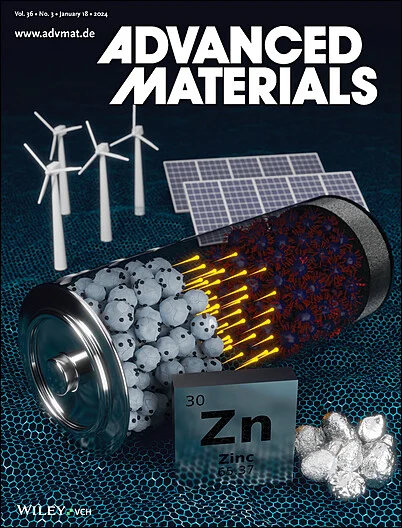Rational Synthesis of Isomeric Graphdiyne Frameworks toward Single-Ruthenium Catalysts and High-Performance Nitrogen Reduction
IF 27.4
1区 材料科学
Q1 CHEMISTRY, MULTIDISCIPLINARY
引用次数: 0
Abstract
Graphdiynes (GDYs), synthesized via direct coupling of arylacetylenes, have attracted great attention due to their unique electronic properties and structural diversity, typically forming 2D layered frameworks. However, crystalline GDY-like frameworks with 3D topology remain challenging to synthesize. Here, the study reports two highly crystalline, isomeric GDY-like frameworks with ThSi2 topology, constructed from 2,2′-binaphthalene and 6,6′-biazulene-based monomers. The azulene-based framework, due to its large dipole moment, exhibits a narrow bandgap of 1.15 eV, significantly lower than its naphthalene counterpart (2.33 eV). As ruthenium (Ru) single-atom supports, these frameworks enable strong Ru-diyne interactions, achieving an ammonia yield rate of 188.7 ± 1.6 µg h−1 mgcat−1 and a Faradaic efficiency of 37.4 ± 0.6%. Such bicontinuous channels and tunable electronic structures offer electrocatalysis field new opportunities. Moreover, the azulene-based framework, featuring a higher highest occupied molecular orbital and lower lowest unoccupied molecular orbital energy level, ensures superior electron mobility. These 3D crystalline frameworks introduce a new covalent organic framework (COF) family with diyne linkages and pure carbon skeletons, broadening the scope of COF materials. Their well-defined structures provide an ideal platform for tuning optoelectronic properties, enabling fundamental studies on structure-property relationships and opening new opportunities for catalytic and electronic applications.

求助全文
约1分钟内获得全文
求助全文
来源期刊

Advanced Materials
工程技术-材料科学:综合
CiteScore
43.00
自引率
4.10%
发文量
2182
审稿时长
2 months
期刊介绍:
Advanced Materials, one of the world's most prestigious journals and the foundation of the Advanced portfolio, is the home of choice for best-in-class materials science for more than 30 years. Following this fast-growing and interdisciplinary field, we are considering and publishing the most important discoveries on any and all materials from materials scientists, chemists, physicists, engineers as well as health and life scientists and bringing you the latest results and trends in modern materials-related research every week.
 求助内容:
求助内容: 应助结果提醒方式:
应助结果提醒方式:


